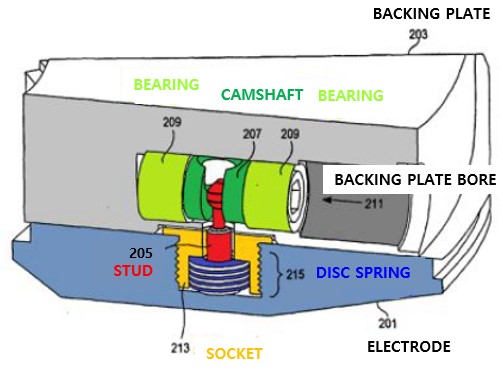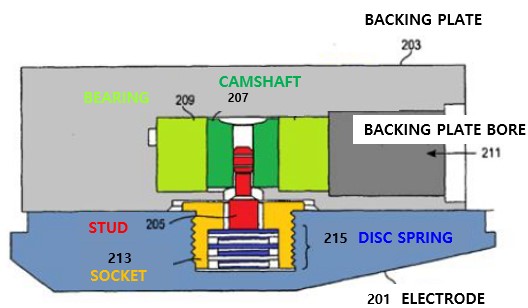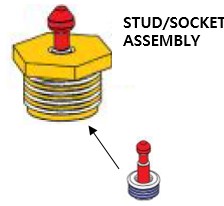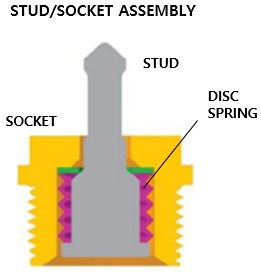▒ Introduction
In February 2024, a global semiconductor equipment manufacturer (hereinafter “plaintiff”) won a patent infringement lawsuit in Korea against a local company (hereinafter “defendant”). Unlike in the court of first instance, the Intellectual Property High Court of Korea (IP High Court) in the second instance ordered the defendant to cease its patent infringement and pay damages of approximately USD 2.6 million to the plaintiff (IP High Court Decision 2023na 10204, February 15, 2024). The plaintiff is known to have recently issued warnings regarding patent infringement to multiple Korean semiconductor equipment manufacturers based on the IP High Court's ruling, suggesting that patent disputes in the semiconductor equipment field are likely to multiply in Korea.
▒ Background
The patent that was the subject of the litigation was the plaintiff's Korean Patent No. 10-1708060 (the Korean national phase entry application for PCT/US2009/001593; hereinafter referred to as the “'060 patent”). The '060 patent relates to a cam lock electrode clamp, and is directed to fixing an electrode to the shower head of an etching equipment through rotation of a camshaft and the resulting change in spring force.
As the claim elements thereof, the '060 patent comprises a stud (205; red), a disc spring (215; blue), a socket (213; yellow), and a camshaft (207; green). The stud, disc spring, and socket together form a so-called “stud/socket assembly” and this assembly is mounted on an electrode, and the camshaft is provided on a backing plate. When the camshaft rotates while the head of the stud is in the region of the camshaft, movement of the stud in the vertical direction is induced, which accordingly compresses the spring and fixes the electrode to the backing plate by the restoring force provided by the spring.


<Figs. 2a and 2b of the '060 patent>
While multiple Korean semiconductor manufacturers were purchasing and using etching equipment from the plaintiff's “A” product family, to which the '060 patent was applied, the defendant began selling a product substantially identical to the stud/socket assembly of the '060 patent to said semiconductor manufacturers, specifying that it is used in the plaintiff's “A” product family.


<'060 patent's stud/socket assembly (left) and defendant's stud/socket assembly (right)>
▒ Whether the defendant's product constitutes indirect infringement on the '060 patent
In Korea, even when there is no direct infringement because not all of the claim elements of a patented invention are implemented in an accused product, acts one step prior to direct infringement with a high probability of leading to direct infringement are regarded as infringing acts (i.e. indirect infringement).
The defendant’s product lacked a camshaft, and thus did not constitute direct infringement of the '060 patent; and the parties thus mainly contested the issue of whether there was indirect infringement.
Under Article 127 of the Korean Patent Act, in order to establish indirect infringement, the following requirements must be met:
Ⓐ Production or assignment of a product used for the production of the patented invention
Ⓑ The product must have no other use than for the production of the patented invention
With regard to requirement Ⓐ, if the accused product is a component for a patented invention that is a finished product, and is a consumable, precedent further requires that: (i) the component corresponds to an essential element; (ii) the component is not generally readily available; (iii) replacement of the component was expected from the time of purchase; and (iv) the patent holder manufactures and sells such component separately (Supreme Court Decision 98hu 2580, January 30, 2001). This is to ensure that patent holders for finished products do not hold excessive monopoly power in the consumables market.
In the present case, the IP High Court found that ⓐ since the defendant specified when selling the stud/socket assembly that it was used in the plaintiff's “A” product family, it is obvious that the defendant's stud/socket assembly is used for the production of the cam lock clamp of the '060 patent, and ⓑ the defendant did not make any reasonable argument regarding other uses for the assembly. In addition, the IP High Court cited the following facts in determining that the defendant's sale of the stud/socket assembly constituted indirect infringement on the '060 patent: (i) the defendant's stud/socket assembly is a core and essential element in fixing the electrode to the backing plate; (ii) it is difficult to regard the stud/socket assembly as a product having general versatility, (iii) replacement thereof was expected at the time of purchase; and (iv) the plaintiff was manufacturing and selling the stud/socket assembly separately.
▒ Whether direct infringement is a prerequisite in order for indirect infringement
to be recognized
According to the exhaustion doctrine, if a patent holder legally sells a product to which a patented invention is applied, the patent rights to the product are treated as exhausted and infringement cannot be claimed for subsequent implementation thereof (Supreme Court Decision 2017da 289903, January 31, 2019). However, beyond the mere repair of the product, replacing a component that corresponds to an essential part thereof is considered a reproduction or reconstruction of the patented invention, and constitutes patent infringement (Seoul Central District Court Decision 2005gahap 48548, August 23, 2006).
The defendant argued that, from the perspective of the Korean semiconductor manufacturers who purchased the defendant’s stud/socket assembly, they legally purchased the plaintiff's equipment and merely replaced some consumable components during use, and accordingly, since the plaintiff's patent rights to the equipment in question had been exhausted and no direct infringement occurred, its act of selling its stud/socket assembly did not constitute indirect infringement. This appears to be based on the position that indirect infringement is recognized only if direct infringement has occurred (the so-called “dependency theory”). The contrary position to this is that indirect infringement can be recognized independently, regardless of whether or not there is direct infringement (“independence theory”).
Korean courts have not yet established a consistent position on this, and are considered to be judging each case differently. In the present case, the IP High Court rejected the defendant's argument, holding that the replacement of the stud/socket assembly of the plaintiff's “A” product family with the defendant’s stud/socket assembly constitutes a new production activity falling outside the generally acceptable scope of repairs. The gist of such a finding is that even if the dependency theory were followed, there would no problem with recognizing indirect infringement, since direct infringement is recognized; and as such, it cannot be concluded that the IP High Court adopted the dependency theory. However, in that the IP High Court did not go so far as to state that there is no need to consider whether there is direct infringement, the ruling can be regarded as being closer to the dependency theory.
▒ Takeaways
- Starting from the perception that the scope of recognition of indirect infringement in Korea is narrower than in other countries, discussions on revising the law around indirect infringement to provide greater protection for patent holders are actively underway at the Korean Intellectual Property Office, and courts are also making rulings, for example, easing the burden of proof from the perspective of protecting patent holders. Therefore, as a patent holder for a finished product, it would be advisable to pay attention to trends in the consumables market.
- In determining whether the implementation of a component of a finished product patent is recognized as indirect infringement, the court requires the patent holder to manufacture and sell the component in question separately. Accordingly, if some elements of the patented invention are consumable articles that are expected to be replaced, it may be advantageous in terms of strengthening their rights for patent holders to conduct business regarding the consumable product, even on a small scale.
- In the present ruling, the IP High Court suggested direct infringement of the '060 patent by the Korean semiconductor manufacturers that purchased etching equipment from the plaintiff. Since these companies are customers of the plaintiff, it will be interesting to see what measures the plaintiff takes with respect to these manufacturers going forward.



